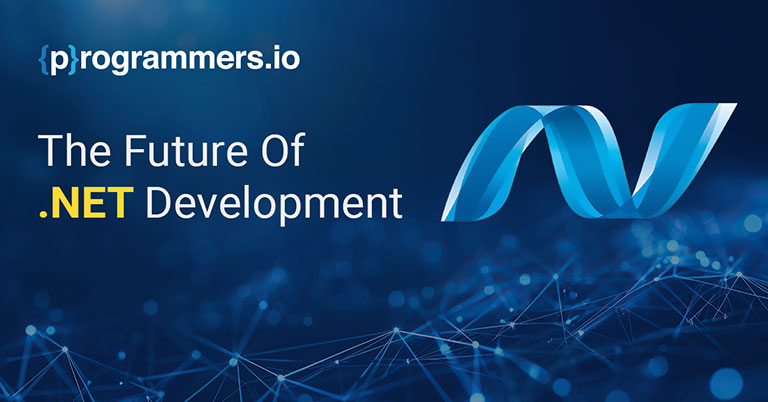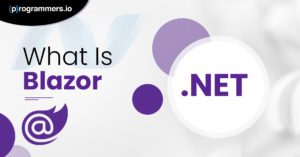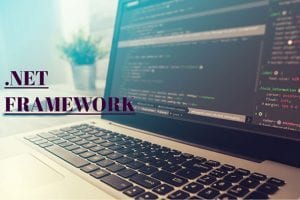The .NET framework has been preferred for enterprise-level development since its introduction in the early 2000s. With the introduction of .NET Core and now .NET 8, the framework continues to evolve, meeting the needs of modern development practices and staying competitive in a rapidly changing technological landscape.
As we look to the future of .NET development, several key trends and innovations promise to shape how a .Net development company will approach building applications. It also provides companies with information on the .Net development skills they need to look for before they hire .Net developers for a project.
1. Evolution of .NET: From .NET Framework to .NET 6
Historical Context and Evolution
.NET was initially a proprietary framework designed to support software development primarily for Windows. It has evolved since to include:
- .NET Framework: .NET was initially tightly coupled with Windows OS. It provided a robust environment for desktop and web applications.
- .NET Core: Launched in 2016, .NET Core marked a significant shift. It was open-source, cross-platform, and introduced a modular architecture, allowing developers to build applications that could run on Windows, Linux, and macOS.
- .NET 5 and Beyond: With the release of .NET 5 in November 2020, Microsoft unified the .NET ecosystem, combining the best of .NET Core, .NET Framework, and Xamarin into a single platform. This unification continued with .NET 6, bringing even more performance improvements and features.
- .NET 8: Released on November 14, 2023, .NET 8 introduced significant advancements, including improved performance, enhanced AI integration, and better support for cloud-native applications. It also comes with long-term support (LTS), ensuring three years of consistent updates and bug fixes, which is crucial for enterprise adoption.
2. The Rise of Blazor
Introduction to Blazor
Blazor is one of the most exciting developments in the .NET ecosystem. It enables a .Net development company to build interactive web applications using C# instead of JavaScript. Blazor leverages WebAssembly to run .NET code in the browser, offering a powerful alternative to traditional JavaScript frameworks like Angular and React.
Advantages of Blazor
- Unified Development: Blazor allows for shared code between client-side and server-side applications, streamlining the development process.
- Rich Component Model: It supports a rich component model that simplifies the creation of complex UIs.
- Strong Tooling Support: Integration with Visual Studio and Visual Studio Code ensures a smooth development experience with robust debugging capabilities.
Future Potential
Blazor will become a major player in web development as it can leverage. NET’s strengths allow developers to build web applications with a consistent technology stack seamlessly and efficiently. The improvements in .NET 8 further enhance Blazor, offering a full-stack web UI framework that supports server-side and client-side rendering in a single programming model.
3. Microservices Architecture with .NET
Adoption of Microservices
The shift towards microservices architecture is driven by scalability, flexibility, and maintainability in large applications. .NET Core’s lightweight and modular nature makes it well-suited for microservices.
Key Benefits
- Scalability: Each microservice can be scaled independently, allowing for more efficient use of resources.
- Flexibility: Different microservices can be written in different languages and technologies, although .NET provides a cohesive environment for many developers.
- Maintainability: Smaller, independent services are easier to maintain and update without affecting the entire system.
Implementation and Best Practices
- Using Docker: Containerization with Docker simplifies the deployment and scaling of microservices.
- Service Meshes: Tools like Istio and Linkerd can manage communication between microservices, enhancing security and reliability.
- API Gateways: Implementing API gateways can help manage and route requests efficiently, improving the system’s overall performance.
4. Cloud-Native Development with .NET
Cloud-Native Principles
Cloud-native development embraces principles such as containerization, microservices, and continuous delivery. .NET’s compatibility with these principles positions it well for building cloud-native applications.
Azure Integration
- Azure App Service: Allows developers to host web apps, RESTful APIs, and mobile backends without managing infrastructure.
- Azure Functions: Supports serverless computing, enabling developers to run code on-demand without provisioning or managing servers.
- Azure Kubernetes Service (AKS): Simplifies the deployment, management, and operations of Kubernetes, a crucial tool for managing containerized applications.
Cross-Cloud Compatibility
While Azure provides a tightly integrated environment for .NET applications, .NET Core’s cross-platform capabilities ensure compatibility with other cloud providers like AWS and Google Cloud.
5. Embracing AI and Machine Learning
Integration of AI/ML
.NET developers increasingly incorporate AI and ML capabilities into their applications. Microsoft’s ML.NET, an open-source machine learning framework for .NET, facilitates this integration for the .Net development company performing the task.
Key Features of ML.NET
- Model Building: Allows for building, training, and deploying custom machine learning models using C# or F#.
- Integration with .NET Ecosystem: Seamlessly integrates with other .NET tools and libraries, enabling developers to add machine learning features without leaving their familiar environment.
- Automated Machine Learning (AutoML): Simplifies the process of building and tuning models, making machine learning more accessible to developers without extensive data science backgrounds.
Use Cases
- Predictive Analytics: Enabling applications to forecast trends and behaviors based on historical data.
- Natural Language Processing (NLP): Enhancing applications with capabilities such as language translation, sentiment analysis, and chatbots.
- Computer Vision: Integrating image and video analysis features, useful in fields like security and healthcare.
6. Performance Improvements
Focus on Performance
Performance has always been a key focus for dot net development. With each new version, significant improvements are made. .NET 8 continues this trend, offering enhancements that make .NET applications faster and more efficient.
Key Improvements
- Enhanced JIT Compilation: The Just-In-Time (JIT) compiler in .NET 8 has been optimized for better performance.
- Improved Garbage Collection: Enhancements in garbage collection reduce latency and improve memory management.
- Profile-Guided Optimization (PGO): Allows applications to be optimized based on real-world usage patterns, leading to better performance.
Real-World Impact
These improvements translate to faster application startup times, lower memory usage, and better overall responsiveness, making .NET an attractive choice for high-performance applications.
7. Security Enhancements
Security in Focus
Security is paramount in modern software development, and .NET provides robust features to help dot net developers build secure applications.
Security Features
- Authentication and Authorization: .NET provides comprehensive support for implementing secure authentication and authorization mechanisms.
- Data Protection: Built-in support for encrypting sensitive data ensures that applications can protect user information effectively.
- Secure Coding Practices: Tools and frameworks like Code Analysis and Secure Development Lifecycle (SDL) guidelines help developers adhere to best practices for writing secure code.
Future Directions
The .NET framework is expected to integrate even more advanced security features as threats evolve, leveraging AI and machine learning to detect and mitigate potential vulnerabilities.
8. Community and Ecosystem Growth
Vibrant Community
The .NET community is one of its strongest assets, continually contributing to its growth and evolution. The community’s role has become even more significant with the transition to open-source.
Ecosystem Expansion
- Third-Party Libraries: A rich ecosystem of third-party libraries and tools enhances the capabilities of .NET.
- NuGet Package Manager: Simplifies managing and distributing libraries, fostering a collaborative environment where developers can share and reuse code.
- Community Contributions: Open-source contributions have accelerated the pace of innovation, with new features and improvements being rapidly integrated into the framework.
Future Prospects
The active and growing community ensures that .NET will continue to evolve, addressing developers’ needs and incorporating the latest technological advancements.
Final Word
The future of .NET development is bright, with continuous advancements and innovations making it a compelling choice for modern software development. From the unification of the .NET ecosystem with .NET 8 to the rise of Blazor, the adoption of microservices architecture, and the embrace of cloud-native principles, .NET is well-positioned to meet the demands of today’s development landscape.
Integrating AI and machine learning and ongoing performance and security enhancements ensures that .NET remains at the forefront of technological innovation.
As the community and ecosystem continue to grow, asp dot net development services can look forward to a future filled with exciting possibilities and opportunities. At the same time, companies can ensure hiring dotnet developers with the right skills.




